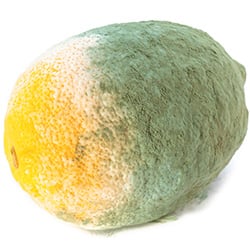Reap911
Well-Known Member
Hi Guys,
I hope everyone is doing well.
Thought I would just start this as a way to get some info going on this topic.
Personally, for anyone using Vermicomposting as a part of your soils, I think that this is a big part of your success when growing in a Living Soil system. This, alongside your compost of course but I really just wanted to focus on the black gold we get from our worms.
I would like to share my findings with you guys as a base and really would just invite everyone to chip in because I am in the learning phase and I know so many of us that are getting into the cultivation approach would really benefit from gaining some insights into what has worked and what has not. I know that this soil cultivation is quite tricky and I know that the tried and tested tribal knowledge out there can save a newbie quite a bit of time and money by getting some views from the more experienced cultivators.
So far what I have done for my bins is use the same materials that go into my soils as food for my worms. I have come to believe that the best food source is from dynamic accumulators (stinging nettle, dandelions, horsetail etc) is a good food source to get a more diverse & abundant nutritional range. I am using dandelions and alfalfa at the moment simply because I have to grow the others because they are hella expensive. I also add banana peels because I am big on my smoothies and horse manure that I get from an organic farmer down the road from me.
I spray beneficial microbes onto my composting bins every now and again. This is something I feel I will do more regularly going forward. I also add in some of the raw materials that I use to top dress such as Kelp, Bone Meal and Insect Frass but not in large amounts.
That's about it.
So I would like to just pose some questions;
1. Anything I could be adding in there to improve the worm's life and the microbiology that I am creating?
2. Any hints and tips?
3. What are you guys throwing in there that is helping you achieve good results?
4. Anything relevant that you could throw into the mix that you think is helpful?
Thanks in advance.
I hope everyone is doing well.
Thought I would just start this as a way to get some info going on this topic.
Personally, for anyone using Vermicomposting as a part of your soils, I think that this is a big part of your success when growing in a Living Soil system. This, alongside your compost of course but I really just wanted to focus on the black gold we get from our worms.
I would like to share my findings with you guys as a base and really would just invite everyone to chip in because I am in the learning phase and I know so many of us that are getting into the cultivation approach would really benefit from gaining some insights into what has worked and what has not. I know that this soil cultivation is quite tricky and I know that the tried and tested tribal knowledge out there can save a newbie quite a bit of time and money by getting some views from the more experienced cultivators.
So far what I have done for my bins is use the same materials that go into my soils as food for my worms. I have come to believe that the best food source is from dynamic accumulators (stinging nettle, dandelions, horsetail etc) is a good food source to get a more diverse & abundant nutritional range. I am using dandelions and alfalfa at the moment simply because I have to grow the others because they are hella expensive. I also add banana peels because I am big on my smoothies and horse manure that I get from an organic farmer down the road from me.
I spray beneficial microbes onto my composting bins every now and again. This is something I feel I will do more regularly going forward. I also add in some of the raw materials that I use to top dress such as Kelp, Bone Meal and Insect Frass but not in large amounts.
That's about it.
So I would like to just pose some questions;
1. Anything I could be adding in there to improve the worm's life and the microbiology that I am creating?
2. Any hints and tips?
3. What are you guys throwing in there that is helping you achieve good results?
4. Anything relevant that you could throw into the mix that you think is helpful?
Thanks in advance.



